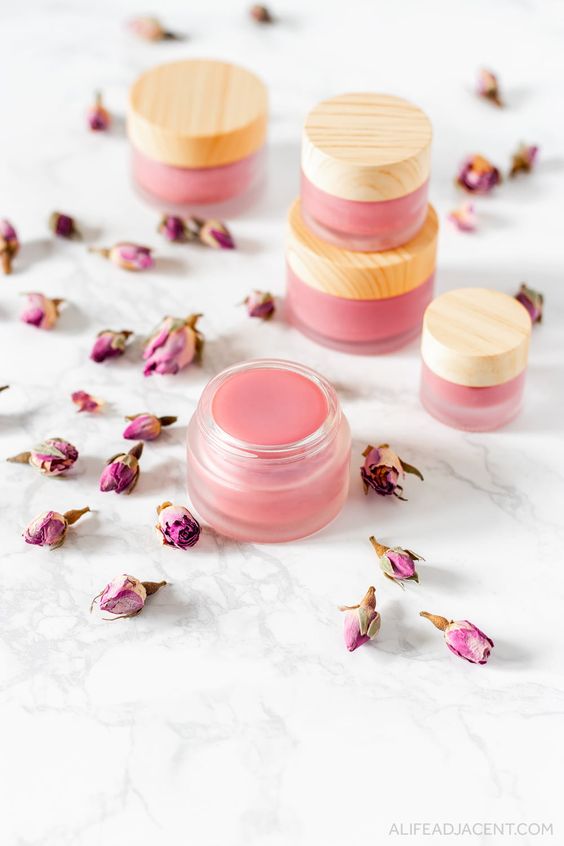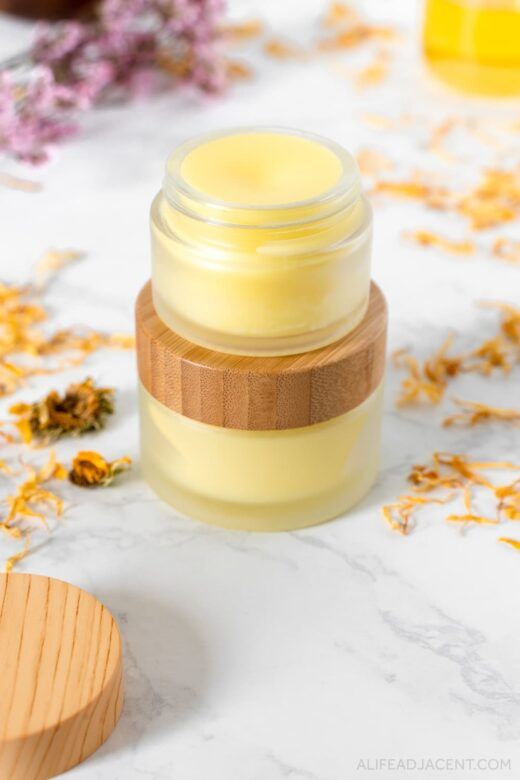There’s something incredibly calming about immersing yourself in a warm bath filled with soft, fragrant bubbles. Unfortunately, many commercial bubble baths contain chemicals and artificial ingredients that can irritate the skin. This homemade bubble bath recipe offers an all-natural, customizable, and budget-friendly alternative for a truly relaxing experience.
Who Doesn’t Love a Soothing Bubble Bath? We all enjoy a nice, relaxing bubble bath from time to time—I certainly do! I cherished them as a kid, and my love for them has only grown.
What I don’t appreciate, however, are the unnecessary toxic chemicals often found in store-bought bubble baths. Many of these products contain sulfates and synthetic fragrances, which have been linked to issues like endocrine disruption, immunotoxicity, and toxicity to non-reproductive organ systems.
What concerns me the most is that many of these bubble baths are marketed toward children and babies.
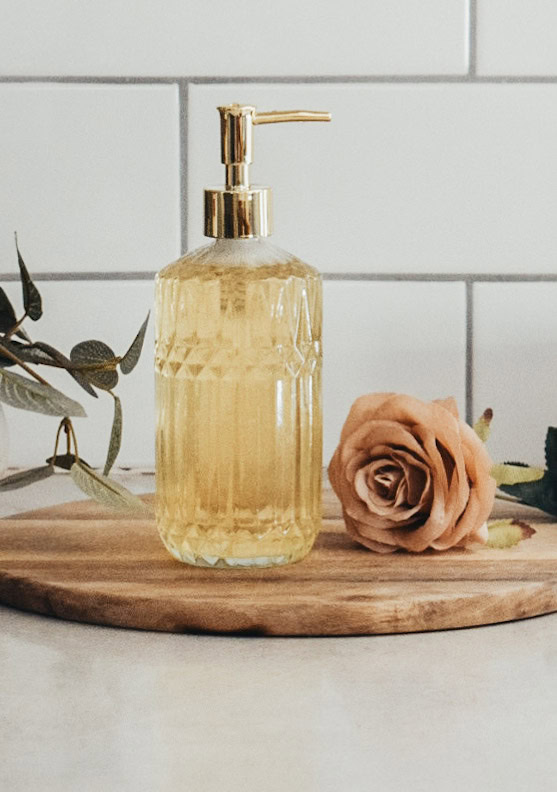
Below are the ingredients from a popular, expensive store-bought bubble bath:
“aqua/water/eau, sodium laureth sulfate, lauryl betaine, ppg-2 hydroxyethyl cocamide, glycerin, glycol distearate, parfum/fragrance, disodium laureth sulfosuccinate, allantoin, aloe barbadensis leaf juice, panthenol, tocopherol, tocotrienols, trilinolein, triolein, helianthus annuus (sunflower) seed oil, camellia sinensis leaf extract, polyquaternium-7, polyquaternium-10, maltodextrin, methyl gluceth-20, sodium benzotriazolyl butylphenol sulfonate, buteth-3, tributyl citrate, citric acid, sodium chloride, magnesium chloride, magnesium nitrate, sodium benzoate, sodium sulfite, polysorbate 20, potassium sorbate, disodium edta, maleic anhydride, sodium hydroxide, methylene di-t-butylcresol, phenoxyethanol, hexylene glycol, caprylyl glycol, methylchloroisothiazolinone, methylisothiazolinone, fd & c yellow no. 5 (ci 19140), fd & c red no. 40 (ci 16035)”
Not only is this an overwhelming list of ingredients, but many of them are toxic. For instance, methylisothiazolinone can lead to immunotoxicity, neurotoxicity, and irritation of the skin, eyes, and lungs. Meanwhile, polyquaternium-7, an anti-static agent, poses risks for non-reproductive organ system toxicity and ecotoxicology.
This particular bubble bath isn’t just harmful to your health; it also negatively impacts the environment. And this is just one example—many other store-bought bubble baths have ingredient lists that look alarmingly similar.
That’s why I’ve stopped purchasing store-bought bubble baths and started making my own. It’s incredibly easy to create, all-natural, and significantly cheaper than the average store-bought option.
How To Make Your Own Bubble Bath
To create your own homemade bubble bath, gather the following ingredients and supplies.
BOTTLE
You’ll need a bottle or bubble bath dispenser that can hold 14 to 18 ounces, like the one shown here. The recipe below will yield approximately 18 ounces of bubble bath. If you opt for a larger soap dispenser, feel free to add a bit more castile soap.
I always prefer glass bottles over plastic because essential oils contain powerful chemical compounds that can break down and react when they come into contact with plastic.
UNSCENTED CASTILE SOAP
Castile soap serves as the base for this bubble bath, providing the bubbles you love. This vegetable-based, natural product is suitable for all skin types, including those of babies.
I always choose unscented castile soap so I can customize the fragrance to my liking.
NATURAL BODY WASH (OPTIONAL)
If you have hard water, you might find that the castile soap doesn’t create much lather. In this case, I recommend adding a body wash to your bubble bath.
Opt for a natural option, like Everyone unscented body wash. Even if you don’t have hard water but want an abundance of bubbles, adding the body wash is a great idea. It significantly enhances the sudsing when combined with the castile soap.
VEGETABLE GLYCERIN
Vegetable glycerin helps thicken the bubble bath, enhancing its suds and bubbles while also offering additional moisturizing benefits.
ESSENTIAL OILS
Essential oils provide the delightful scent for the bubble bath, as all the other ingredients are unscented. If you want your bubble bath to smell amazing, be sure to add essential oils.
Below, you’ll find various combinations of essential oil scents.
It’s crucial to use only 100% pure essential oils, as some are synthetic. Fake essential oils can be just as harmful as the toxin-laden store-bought bubble baths.
For tips on how to identify fake essential oils and to discover some of my favorite brands, check out my post titled Fake Essential Oil Brands You Should Avoid.
Homemade Bubble Bath Recipe
To create this homemade bubble bath recipe, simply add the following ingredients to your jar or bottle. I typically use an 18-ounce glass bottle for this bubble bath. If you’re using a larger or smaller container, be sure to adjust the quantities of each ingredient accordingly.
Ingredients:
- 1 cup castile soap
- 1 cup body wash (if you choose not to use body wash, add an additional cup of castile soap)
- 1/4 cup vegetable glycerin
- 30-40 drops of essential oils (see scent combinations below)
Make sure to blend the ingredients thoroughly and shake well before each use.
Simple Essential Oil Scent Combinations
You can create any scent combination you like with essential oils. If you prefer something straightforward that doesn’t require too many different oils, I recommend the following combos:
Simply add the essential oils to the recipe above, keeping in mind to adjust the amounts if you’re using a larger or smaller dispenser than I suggested.
Combo #1: 15 drops lavender + 15 drops lemon
Combo #2: 15 drops peppermint + 15 drops orange
Combo #3: 15 drops grapefruit + 15 drops lime
Homemade Christmas Bubble Bath
With Christmas just around the corner, I thought it would be fun to create some festive scent combinations for the holidays.
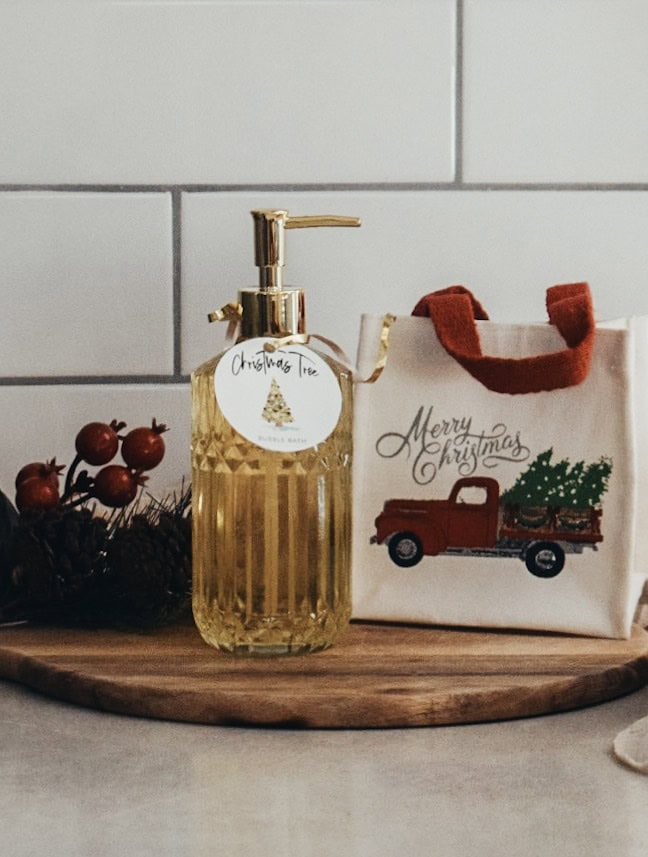
Candy Cane
30 drops peppermint + 10 drops spearmint
Christmas Cookie
20 drops ginger + 5 drops clove + 5 drops cinnamon + 4 drops nutmeg + 10 drops vanilla
Christmas Tree
30 drops fir + 5 drops vetiver + 5 drops cypress
This DIY bubble bath makes a great homemade gift—especially the Christmas-scented bubble baths.
You can sign up to receive free homemade printable gift tags below.

Alternatively, you can sign up to receive the colored bubble bath labels instead.
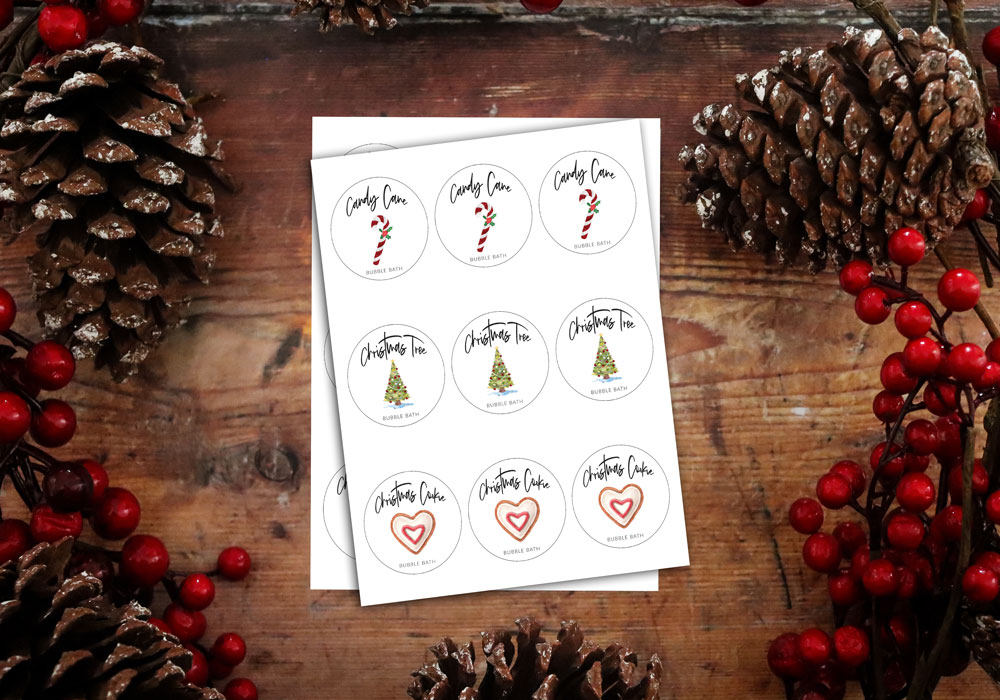
How To Use Homemade Bubble Bath
To use this homemade bubble bath, simply pour 1/4 to 1/2 cup into the bathtub while the tub is filling with water. Feel free to add more if you’d like it to be bubblier or sudsier.
For extra-large bathtubs, you may need to use more than 1/2 cup of bubble bath.
Keep in mind that homemade bubble baths typically don’t create as much suds as store-bought varieties. This is because store-bought bubble baths contain surfactants, which are responsible for producing those giant, foamy bubbles.
However, surfactants are harmful to the environment, so I prefer my homemade bubble bath.
I’ve heard that whisking an egg white into the bubble bath mixture can help create fluffy, long-lasting bubbles, but I haven’t tried that yet.
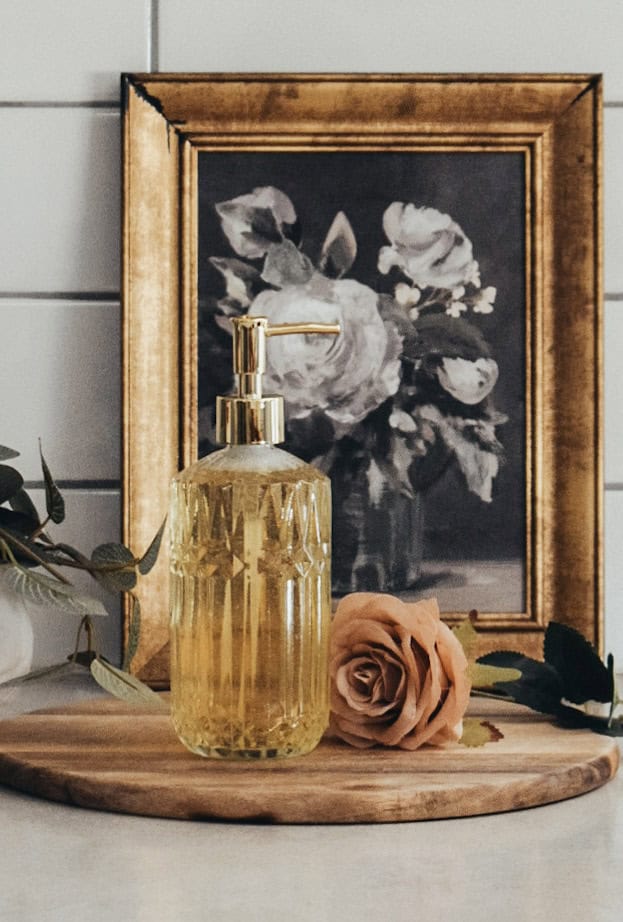
How To Store DIY Bubble Bath
This homemade bubble bath should be stored in a sealed container. The glass bottle I recommended earlier is perfect for storing this DIY bubble bath.
Just make sure to keep the pump tightly sealed at all times to prevent contamination from bacteria.
How Long Does Homemade Bubble Bath Last?
This homemade bubble bath can last for 1 to 2 years when stored in a sealed container.
How Often Can Homemade Bubble Bath Be Used?
You can use this homemade bubble bath as often as you like since it contains only natural ingredients, allowing you to enjoy a relaxing soak without worrying about harmful chemicals.
However, keep in mind that castile soap can be drying for the skin, so be sure to moisturize well after bathing. If you notice your skin becoming excessively dry, you may want to reduce your usage.
NEED ESSENTIAL OILS?
Make sure to use 100% pure essential oils when putting together this recipe. High-quality oils don’t have to break the bank.
I recommend brands like Simply Earth, Plant Therapy, and Far & Wild, as they all offer high-quality oils at affordable prices.
If you decide to buy from Simply Earth, you can use the code HAPPYHEARTFREE to receive an essential oil recipe box, a bonus box, and a $45 Simply Earth gift card, all for just $29.99 (new customers only)!!!
If you’re unfamiliar with Simply Earth or their recipe box, you can check out previous boxes [here].
CONCLUSION
In conclusion, creating your own homemade bubble bath provides a natural, customizable, and budget-friendly alternative to store-bought products.
By selecting your own ingredients, you can ensure that your bath is free from harsh chemicals, synthetic fragrances, and unnecessary additives, making it gentle on your skin.
Moreover, you can tailor the scents, textures, and moisturizing properties to suit your preferences and specific skin needs.
I truly hope you enjoy using this homemade bubble bath! If you have any questions about the recipe, feel free to leave them in the comments below.


